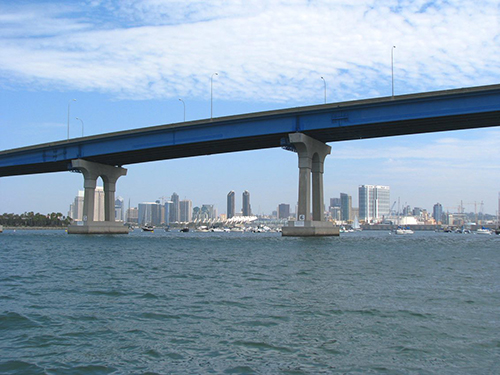Clean Water Act Success Story: San Diego Bay

San Diego Bay, one of the most striking natural harbors in the United States, spans 12 miles of scenic coastline and is an invaluable resource for California’s southern-most metropolitan region.
Besides providing habitat for fish and wildlife, commercial, industrial, and maritime economic benefits, and maintaining a role in national defense with three military bases, the bay’s beauty is a magnet for tourism and business conventions. In pre-Covid 2019, leisure and hospitality accounted for one in eight San Diego jobs and contributed $19.2 billion to the community in total economic impact. Today, San Diego Bay is the economic hub of the region.
But prior to passage of the Clean Water Act in 1972, the water was so contaminated that San Diego Regional Water Quality Control Board Executive Officer Dennis Leary characterized the bay as a “metropolitan cesspool” and a serious threat to human and environmental health.
Back then, the bay was filled with priority pollutants – polychlorinated biphenyls (PCBs), mercury, bacteria, metals, and trash – due to decades of discharges from numerous municipal and industrial sources, including munitions and dredging from World Wars I and II, five aircraft facilities, 12 shipping and boating yards, 5 canneries, a 160-ship commercial tuna fleet and a slaughterhouse and rendering plant.
The federal Clean Water Act, which was heavily influenced by California’s Porter Cologne Water Quality Control Act of 1969, empowered the San Diego Water Board to accelerate its water quality monitoring, permitting and waste discharge elimination enforcement to advance cleanup efforts in the 1970s. The legislation also provided funding to continue expanding and upgrading the Point Loma Sewage Treatment Plant in 1975, 1983 and 1985.
As pressure to clean up the bay intensified in the early 1980s, the San Diego Water Board investigate and aggressively regulate pollutant sources, collect sediment samples from more than 300 sites, and identify 13 areas contaminated with mercury, PCBs, tributyl tin and other toxins. In 1985, the board created the San Diego Bay Cleanup Program and ordered the remediation of nearly 500,000 cubic yards of contaminated sediment.
The board continues to address the sources of water quality impairment. In 2015, the Strategy for a Healthy San Diego Bay was developed to determine what is needed to protect and restore the key beneficial uses such as recreation, fish and shellfish consumption, and habitats and ecosystems. Most recently, modernized data collection has furthered the staff’s commitment toward pursuit of a clean, healthy bay and full compliance with the principles of the historic Clean Water Act that is now in its 50th year.



